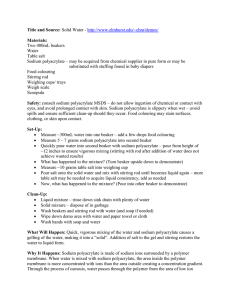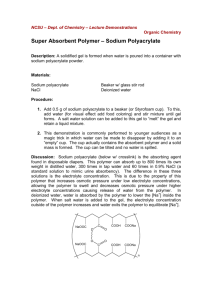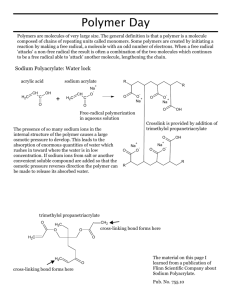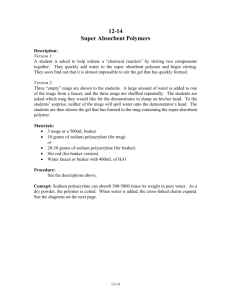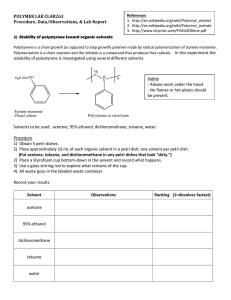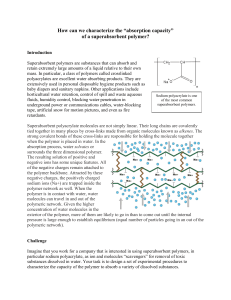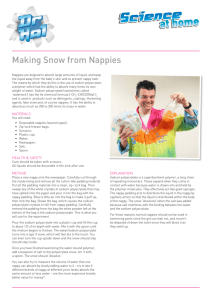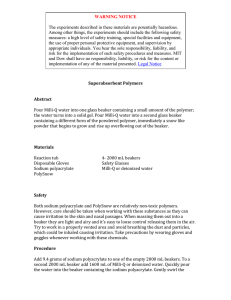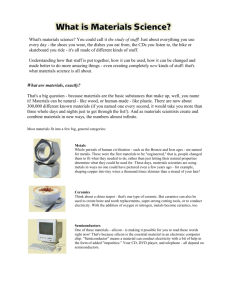Sodium Polyacrylate ICLS 1314
advertisement
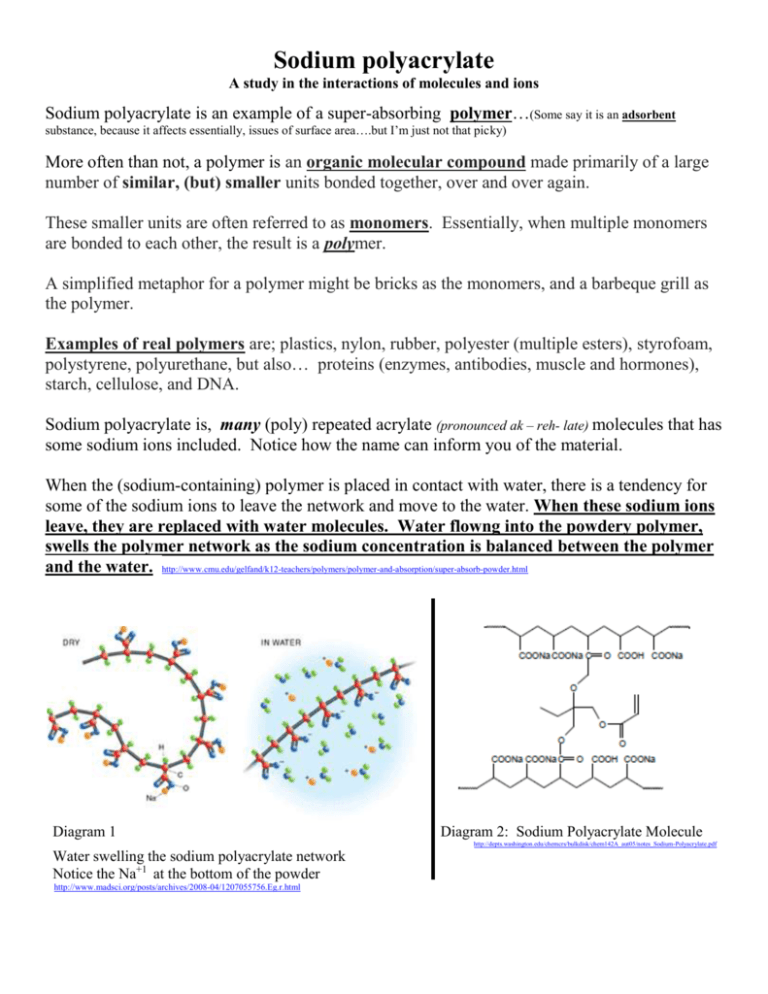
Sodium polyacrylate A study in the interactions of molecules and ions Sodium polyacrylate is an example of a super-absorbing polymer…(Some say it is an adsorbent substance, because it affects essentially, issues of surface area….but I’m just not that picky) More often than not, a polymer is an organic molecular compound made primarily of a large number of similar, (but) smaller units bonded together, over and over again. These smaller units are often referred to as monomers. Essentially, when multiple monomers are bonded to each other, the result is a polymer. A simplified metaphor for a polymer might be bricks as the monomers, and a barbeque grill as the polymer. Examples of real polymers are; plastics, nylon, rubber, polyester (multiple esters), styrofoam, polystyrene, polyurethane, but also… proteins (enzymes, antibodies, muscle and hormones), starch, cellulose, and DNA. Sodium polyacrylate is, many (poly) repeated acrylate (pronounced ak – reh- late) molecules that has some sodium ions included. Notice how the name can inform you of the material. When the (sodium-containing) polymer is placed in contact with water, there is a tendency for some of the sodium ions to leave the network and move to the water. When these sodium ions leave, they are replaced with water molecules. Water flowng into the powdery polymer, swells the polymer network as the sodium concentration is balanced between the polymer and the water. http://www.cmu.edu/gelfand/k12-teachers/polymers/polymer-and-absorption/super-absorb-powder.html Diagram 1 Diagram 2: Sodium Polyacrylate Molecule http://depts.washington.edu/chemcrs/bulkdisk/chem142A_aut05/notes_Sodium-Polyacrylate.pdf Water swelling the sodium polyacrylate network Notice the Na+1 at the bottom of the powder http://www.madsci.org/posts/archives/2008-04/1207055756.Eg.r.html Sodium polyacrylate is the main ingredient in high-absorbency diapers. It is also commonly used in alkaline batteries, feminine hygiene products, nursery potting soil, water beds, and as a fuel filtration material to remove moisture from automobile and jet fuels. http://depts.washington.edu/chemcrs/bulkdisk/chem142A_aut05/notes_Sodium-Polyacrylate.pdf Because these polymers work by absorbing water, via osmosis, an interesting condition occurs when an electrolyte solution is added to the polymer powder. The powder does not absorb as much water. This happens because the ion exchange which occurs between the powder and the more concentrated electrolyte solution is lessened. Diagram 3: Plants Growing in Sodium Polyacrylate Gel http://teams.kennesaw.edu/waterlock/costello-planter.htm http://teams.kennesaw.edu/waterlock/costello-planter.htm Today: Use a baggy and the amount of sodium polyacrylate provided. Add some distilled water and “play”. This is safe to touch with your hands. All materials go into the trash bins at the end of the period. When you have exhausted your activity with distilled water and the powder, try the same activity with some salt water. What happens? Question: Can you design a laboratory which determines the number of milliliters of distilled water a 0.100 gram sample of polyacrylate can absorb? Question: Given the effect of saltwater on sodium polyacrylate, how might this affect the construction of a diaper, designed to absorb urine? A baby’s urine has as many electrolytes as a 1% solution of saltwater.
